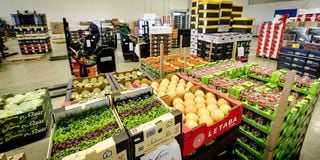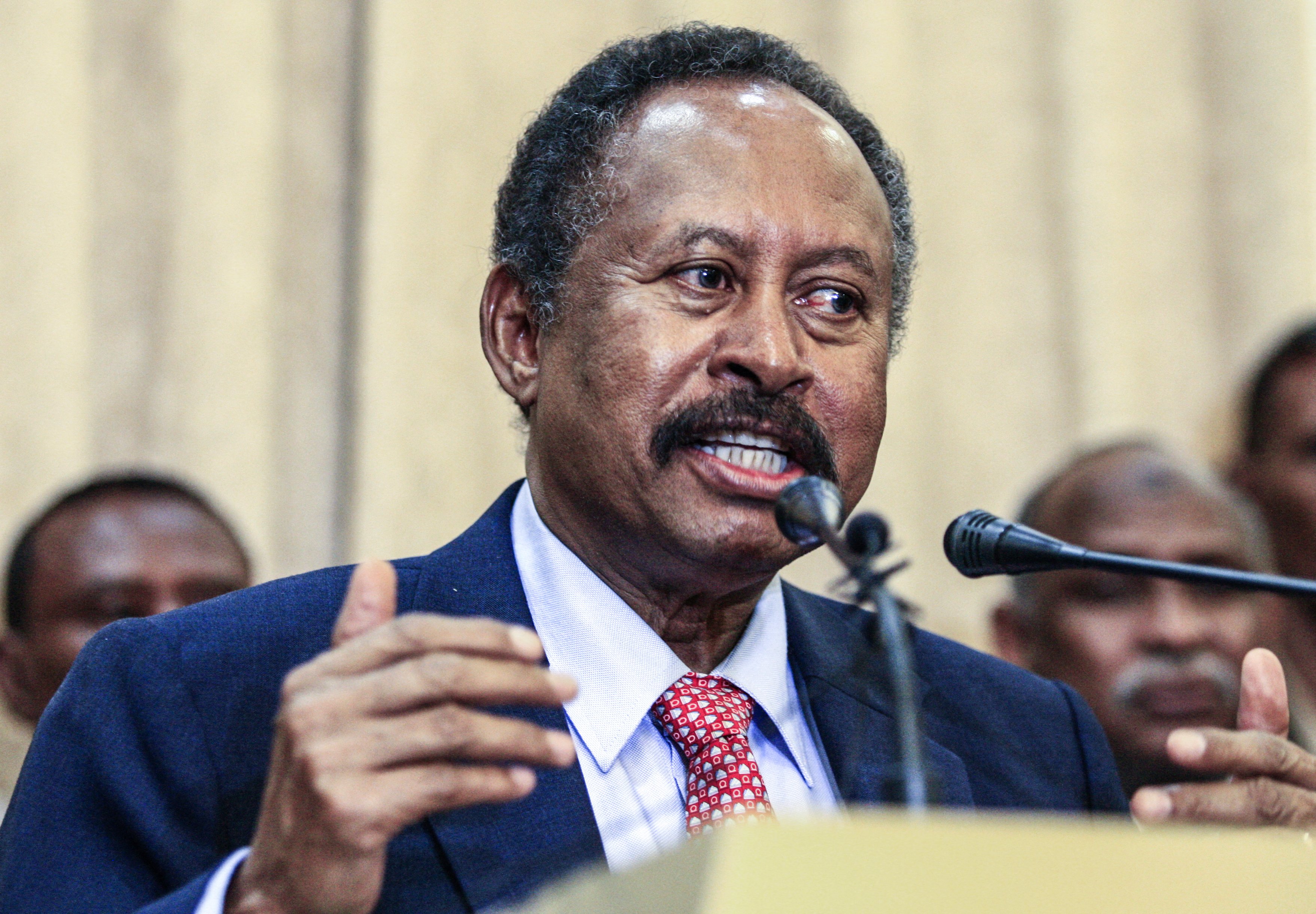Prime
21 export items: Uganda’s opportunity in Africa Trade Zone

AfCFTA is an opportunity to improve competitiveness. PHOTO/RACHEL MABALA
What you need to know:
Exports. If Ugandans exploit the market potential of the 21 agricultural products in Africa’s Free Trade Aea, Uganda can become a top notch producer on the continent.
It is no longer a secret that most of Uganda’s products, despite being referred to as “good,”struggle to access prime markets.
According to market research analysts and economic sector players, the market accessibility challenge is not a “new disease” but rather a “growing one”. This is because the market access issue has not only been neglected but also allowed to mushroom to a point that is now affecting the country’s products across the globe.
The Covid -19 pandemic interruptions have taken a toll on the economy, impairing the country’s market access to the traditional market.
The good news is that through the African Continental Free Trade Area (AfCFTA,) there is a window that if well executed can turn Uganda into a top notch continental producer and provider of some of the needed goods and services.
However, all this will depend on how well Uganda goes about its business in the continental trade.
While presenting the AfCFTA market Assessment Report publication (UNCCI, 2022) that sought to establish the potential product mix for Uganda’s exports to the AfCFTA to both private and public players at the launch of free trade awareness project last week in Kampala, Mr William Babigumira, team lead project said there are 21 products that have potential for expanded exports into 11 priority AfCFTA markets.
“The products with potential in market target include coffee, cocoa, oil seeds, animal and animal products (milk, bovine offals), flower cuttings, dry beans, milk products (cereal flours), vegetables (potatoes, fresh, chilled), alcoholic beverages, animal feeds (beans, oil cakes) and cotton (seed apparels),” Mr Babiguma noted.
This will be in addition to services such as tourism, communication, transport, business services, and financial Services.
The AfCFTA will expand the size of Africa’s economy to $29 trillion by 2050, according to an estimate by the United Nations Economic Commission for Africa (UNECA).
Some constraints for the free trade include; small firm and farm size, low productivity and output per planted acre, extension services, technological constraints (these limit value addition, roasting, packaging of coffee, processing of diversified products such as cocoa powder, cocoa butter and chocolate.
In addition, limited crushing and refining capacity. All these factors constrain the potential for backward linkages to create jobs on the account of new AfCFTA markets, the higher knowledge and capital intensiveness requirements, climate change and low climate resilience.
The assessment provides a rigorous analysis of the potential products and markets for consideration by Uganda’s private sector and trade policy community.
The report further indicates that “Uganda’s exports to Africa are concentrated in proximity markets mainly in East Africa, Sudan and the Democratic Republic of Congo. This observation reveals that for Uganda, success in proximity markets has happened but not for much of Africa,” reads the report in part.
The methodology applied a selection for Uganda’s export products including those that yielded a trade surplus, a high import demand into the rest of Africa (defined as African countries excluding the EAC) a favourable margin of tariff preference and an optimal bilateral trade cost.
Ms Sheila Ngatia, deputy Resident Representative, United Nations Development Programme (UNDP) expressed joy to be party to Uganda’s industrialisation journey, which is a critical role in driving economic transformation, generating export revenues, job creation and poverty reduction.
The awareness programme activities of the UNDP-Funded project known as “Trading Beyond EAC and COMESA is aimed at ‘Unlocking Uganda’s Potential in the AfCFTA’.
“AfCFTA is huge and an overdue step in Africa’s economic integration journey. This is a game changer for economies like Uganda, as it heralds a virtuous circle of larger market opportunities, triggering more trade and investment and allowing greater value addition, export diversification and productivity growth leading to more and better jobs with social inclusion, and thus further enlarged markets,” Ngatia says.
It also offers an opportunity to promote socioeconomic transformation and improve competitiveness through building competitive value chains in manufacturing at the national, regional and continental levels.
It presents a timely opportunity for Uganda in view of its geography and demography hence increasing opportunities in manufacturing and industrialisation across key sectors.
The project initiative aims at creating awareness about AfCFTA, setting up a Trade Finance Facility to support micro, small and medium scale enterprises (MSMEs), boosting trade-related information via direct support to strengthening the capacities of existing and new trade information portals and offer support in preparation of the remaining phases of the AfCFTA negotiations and providing dedicated support to the development of the Women in Trade Protocol in Uganda.
“A first phase of $2 million (approximately Shs7.08 billion) is envisaged to close by the 31st of March 2022. It is a 12-month catalytic set of foundational activities, being used as a trigger for additional resources for supporting a much larger programme for increased production and manufacturing for enhanced export performance,” Ngatia said.
The initiative will further unlock Uganda’s export potential, particularly on green exports, job creation for youth and women, and digital transformation opportunities.
However, to attain the benefits, Ngatia cites some of the challenges which Uganda must overcome such as; trade policy and institutional reform where Uganda needs to strengthen the institutional, human capital and compliance capacity to implement AfCFTA.
This involves creating a conducive environment and complementary policy measures such as: skills training for youth, de-risking/incentive funding support and integrated industry-trade-fiscal policies are put in place to facilitate trade and investment.
In addition, there is need to enhance the private sector’s role through Public-Private partnerships.
“This underpins the critical importance for Uganda to develop effective policies and a robust export strategy. The country also needs to identify new opportunities for diversification, industrialisation, and value chain development,” she adds, noting that although the AfCFTA can address many important demand-side constraints to trade, particularly those linked to market size, supply-side constraints must also be addressed. These include mobilising producers for bulking; value addition and standards & certification, among others.
Maximising free trade
ACFTA is a single African market that came into force in 2019 to boost socio-economic development, employment and revenues.
The Minister of State for Trade Harriet Ntabazi urges Ugandans to take advantage of the huge market, now presented by the ACFTA, through collaborations with agencies such as Uganda National Chamber of Commerce and Industry (UNCCI) and Ministry of Trade.
She notes that the Ministry of Trade and development partners - United Nations development programme (UNDP)are developing a national strategy on the implementation of the African Continental Free Trade Area.
Although Trading with the bloc formally took effect January 1, 2021 the majority of African countries are still lagging behind.
“Africa Free Continental Trade Area (AfCFTA) is a market of more than 1.2 billion people and which is targeting a lot of products. Some of the products have been tried in other markets such as at the East African level, regional level and the local level but could not access bigger markets yet we have the capacity to produce enough to serve that market,” Ntabazi says.
She adds: “This is a big opportunity that Uganda has got but many people have not yet got the information. The awareness that the UNCCi is going to carry is going to be an eye opener to many Ugandans and we as Ministry of trade will facilitate the ease of doing business.”
AfCFTA is expected to yield the above results as it will support industrialisation and ensure market access through coordinated value chains.
“54 out of 55 countries endorsed the agreement while other countries have so far ratified it to facilitate inter-African trade and investment which represents a market of 1.2 billion people with a combined GDP of $3.4 trillion,” Ntabazi says, adding with the coming into existence of the AfCFTA, Inter- African trade is expected to increase by 15 percent to 25 percent by 2040 and an investment increase of $50-70 billion.
Olive Kigongo, president, Uganda National Chamber of Commerce and Industry (UNCCI) says there is support geared towards increasing the market base in AfCFTA.
“We have gained the support to help to train exporters in capacity building, information, skilling, in quality control of those already in the process and expose them to these African markets. Our leaders have gone ahead to form a centre of arbitration should anything go wrong. This means if you are doing business with for instance Ghana or Nigeria should anything go wrong, we have the capacity on the continent to address it,” Kigongo says.
Robert Anyang, the chief executive officer of USAID SIA, says since most people struggle to meet the export requirements, they have opted to invest in small and medium enterprises to unlock financial opportunities for people to acquire domestic and foreign financing.
“No one wants to go to the bank due to constraints. All people want is patient capital to grow their businesses which is done through taking on equity,” Anyang says.
He adds that this can be achieved by helping companies put their books to become investable.
Support
Building capacity
We have gained the support to help to train exporters in capacity building, information, skilling, in quality control of those already in the process and expose them to these African markets. Our leaders have gone ahead to form a centre of arbitration should anything go wrong. This means if you are doing business with for instance Ghana or Nigeria should anything go wrong, we have the capacity on the continent to address it.




